Pilgrim’s Notes #4: What’s your Treasure?
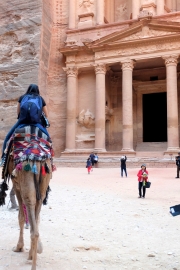 My recollection of the world ‘Petra’ is in reference to a local Filipino comedy film, and then later on to a Christian band. I have not seen Indiana Jones, so I had no idea what it looked like. That was until my friend Keren showed me photos of his trip to Petra in 2011. Since then, I had been curious.
My recollection of the world ‘Petra’ is in reference to a local Filipino comedy film, and then later on to a Christian band. I have not seen Indiana Jones, so I had no idea what it looked like. That was until my friend Keren showed me photos of his trip to Petra in 2011. Since then, I had been curious.
What’s the biblical significance of Petra? I do not seem to remember it being mentioned in any of my ‘religion’ classes. Well, as the tour guide, and our chaplain Fr. Domie Guzman would later explain, Petra was the capital city of the nomadic tribe of Nabateans. But who were the Nabateans? There is very little mention of this tribe in the Bible, except for some references in the old testament. We also were told that Herod’s mother was a Nabatean (the Herod who asked to massacre all the firstbon son), and that St. Paul spent some time with the Nabateans.
So more about the Nabateans: They are a Nomadic tribe that rose to political/economic power when they got involved carrying goods from Petra to the port of Gaza and Alexandria. Soon enough, from being just middle-men, they became key players in the Caravan routes. Petra was in the ancient times, very much an urban center of the Nabatean kingdom.
It has fantastic and advanced urban-planning. The area was a catch-basid for flood waters. Ancient engineers constructed aqueducts, piping systems, canals that allow water to fall flow from the sources in the mountains through the entire city and the temples. Walking though Petra, we can still visibly see some of these channels.
Petra was located at the intersection of two commercial trade routes: the spice/incense trade (extending to Europe) and the silk trade (extending to Asia). This made them a key hub for the caravan routes. At Petra, the traders can find shelter and water for a fee. They also collected tolls and taxes on the goods that passed by. You can see references on the caravan routes carved in the stone:
This made the Nabateans very rich — giving them resources to construct such ornate structures — carving them entirely from the rose-colored stones of Petra, and even celebrated the divinity of Kings — thus the many temples and structures.
But when the Romans overtook Petra, things have changed for the Nabateans. The trade routes began to shift seaward, and thus Petra became economically insignificant for the traders. A massive earthquake also struck the area, and soon, it became a ‘lost city’.
You have many ways to explore Petra. You can stay near the city (check in the hotel) and explore the vast complex for a day or two. But as for us, we only took a day trip. We got there after noon (which was a bad idea since the sun was so hot). Entrance fee to the park is around $130.
They tell you that that tickets include a horse ride to the places. While the horse-ride may be free, the boys and locals will always ask for tips. And sometimes they can be so insistent, they will as for $20 tips. You can also ask a carriage to take you to the key temples and places (and you need to pay $30 one way) or you can walk. I figured I wanted to walk the 2mile-distance, so I can examine the rocks and take more photos than be in a carriage. I also didn’t want to bother negotiating with the carriage driver for the tip.
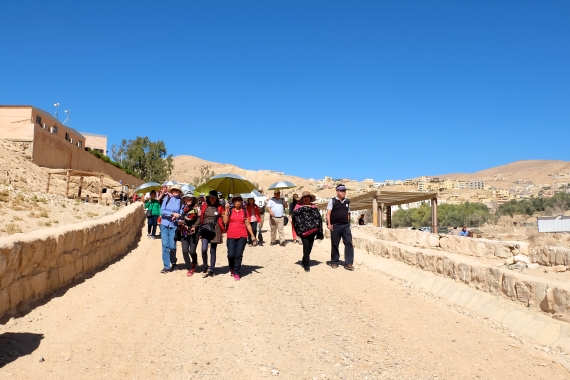
Walking turned out to be a, relatively, bad decision on my part, since my other co-pilgrims walked ever so slow — thus we only got to see a few of the structures inside Petra because of lack of time. The first part of the walk was excruciatingly hot, but once you enter the Siq, it becomes very very cool and shaded.
The Siq is a 2km winding canyon, with some carvings. The rocks themselves are impressive though. I am amazed by their colors, and on how the sun shines in some spots.
At the end of the Siq is the Khazneh, or more popularly known as ‘The Treasury’. In the movie, Indiana Jones, this is where he supposedly finds the ‘Holy Grail’. Of course, that’s just fiction. There’s no ‘Holy Grail’. But people believed that it really stored treasures so you see some holes in the walls as people tried to pluck something out of the walls (like some gems or stones).
The ‘Treasury’ is the most recognized area of Petra, and a perfect backdrop for a photo-op. You can ask to ride around in a Camel for a few minutes and a photo-op for a cost of $5 for the camel, and another $10 for the photo.
I like the whole drama of how the Siq ends and how you can take a peak of ‘The Treasury’ before you actually get to the place.
Within the complex are other things like rock-carved theatre, a colonade, a monastery, and the mountain of Aaron. Didn’t get anywhere much since we were walking for 2 hours, which meant we need to walk another 2 hours back to the bus.
If you’re going to do some walking, I suggest you bring water. Although you can buy Coca-Cola at the end of the Siq, near the Treasury. Souvenir shops near the entrance are also good-priced, so if you want to buy some stuff within Jordan, you can do it there.
What are my reflections from this, otherwise, touristy part of my trip?
First: The Nabateans are proof that one can get ahead in life without the need to ‘conquer’ or kill others. They rose to economic power through ingenous engineering, good business acumen, and hardwork. They did not go to war to acquire their kingdom. As we all aspire for prosperity, we can do this without being corrupt, without hurting or harming other people so we can get ahead.
Second: Like any other treasures, earthly wealth is temporary. The City of Petra was so advanced during its time. Its was very rich. But changes in economic dynamics and natural disasters took all of the glory away. The Bible tells us we shouldn’t concern ourselves with storing up treasures of the world, which the theives can rob and the moth can destroy — but store up richess in heaven. Don’t get me wrong, Petra still looks beautiful and awe-inspiring. But it’s a dead city — nobody lives there anymore. There is nothing but tombs and empty monuments. To truly live life, we must always be alive. Nobody bodily lives forever — but with love, and kindness, compassion and humanity, we can ‘live forever’ in the lives we are able to touch.
So on the bus ride back to the hotel I got myself thinking and assessing where my ‘treasures’ lie. For where your treasure is, there your heart will be.

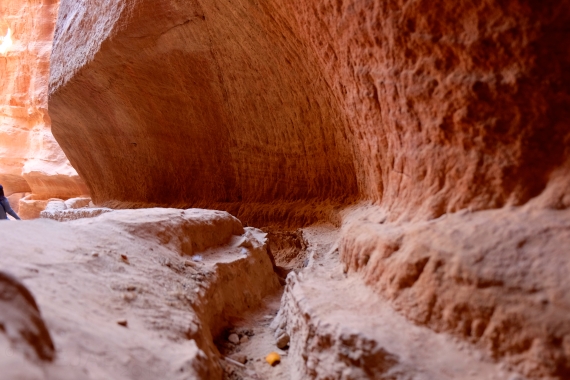
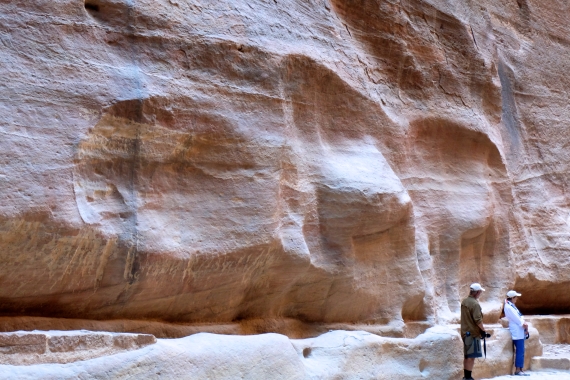

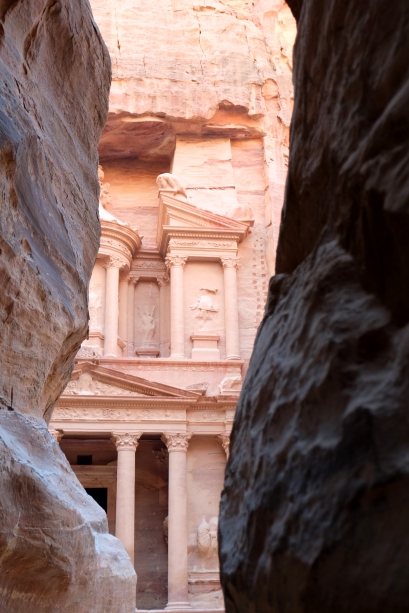
Leave a comment